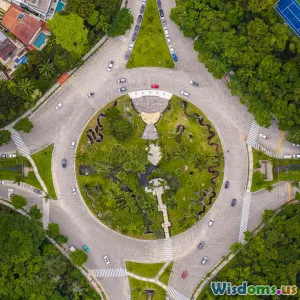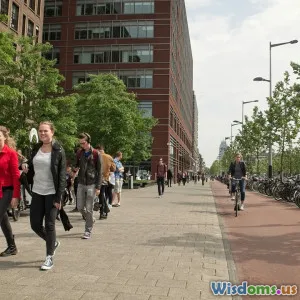
Sustainable Transportation in City Planning
5 min read Explore innovative strategies for incorporating sustainable transportation into urban planning to reduce environmental impact and enhance livability. (0 Reviews)
Sustainable Transportation in City Planning
Introduction
As urban populations continue to grow, the challenge of sustainable city planning becomes increasingly important. Transportation is a critical component of urban design, influencing everything from air quality to social equity. This article delves into the principles and practices of sustainable transportation in city planning, exploring innovative strategies to create more livable, environmentally friendly cities.
The Importance of Sustainable Transportation
Sustainable transportation refers to modes of transport that have a low environmental impact and contribute to the reduction of greenhouse gas emissions. With transportation accounting for a significant portion of global emissions, integrating sustainable practices in city planning is essential for combating climate change and promoting public health.
Key Benefits
- Reduced Emissions: Transitioning to electric vehicles, public transport, and non-motorized transport options like biking and walking reduces carbon footprints.
- Enhanced Public Health: Sustainable transportation encourages active mobility, which improves physical health outcomes by promoting walking and cycling.
- Economic Growth: Investments in sustainable infrastructure can stimulate local economies by creating jobs and increasing property values.
- Social Equity: Accessible and affordable transport options can help bridge the gap for marginalized communities, increasing access to essential services.
Integrating Sustainable Transportation in Urban Design
1. Mixed-Use Development
Urban planners are increasingly adopting mixed-use developments that combine residential, commercial, and recreational spaces. This reduces the need for long commutes and encourages walking, cycling, and the use of public transport.
Example
The city of Portland, Oregon, has successfully implemented mixed-use zoning that promotes walkable neighborhoods and has significantly reduced car dependency.
2. Public Transportation Systems
Investing in efficient, reliable, and clean public transit systems is vital. Cities should prioritize buses, trams, and subways that operate on renewable energy sources to minimize emissions.
Example
Barcelona’s extensive public transport network, including electric trams and buses, has made it one of the most accessible cities in Europe, significantly reducing the reliance on personal vehicles.
3. Bicycle Infrastructure
Creating safe and dedicated cycling lanes encourages more residents to choose biking over driving. Cities can enhance their cycling networks by providing bike-sharing programs and secure parking.
Example
Copenhagen is renowned for its bike-friendly infrastructure, with over 390 kilometers of designated cycling lanes, resulting in 62% of residents commuting by bicycle.
4. Walkability and Pedestrian Zones
Designing cities with pedestrian-friendly streets and public spaces encourages walking. Implementing pedestrian zones not only enhances safety but also boosts local businesses.
Example
The city of Oslo, Norway, has transformed its city center into a pedestrian-friendly area, resulting in a vibrant public space that attracts visitors and supports local commerce.
5. Smart Technologies
Utilizing smart technologies, such as traffic management systems and apps that provide real-time transit information, can enhance the efficiency of transportation networks.
Example
Cities like Singapore use smart traffic systems to optimize traffic flow and reduce congestion, promoting the use of public transportation.
Challenges to Implementing Sustainable Transport
Despite the benefits, several challenges exist:
- Funding: Securing financial resources for sustainable infrastructure can be difficult.
- Political Will: Resistance from stakeholders, including car manufacturers and residents, can hinder planning efforts.
- Cultural Attitudes: In many cities, there’s a deep-rooted preference for car travel that needs to be shifted.
Conclusion
Sustainable transportation is pivotal in shaping the cities of the future. Urban planners must prioritize innovative strategies that promote environmentally friendly transportation options, ensuring cities are not only livable but also resilient against climate change. By fostering a culture of sustainability, we can enhance the quality of life for all residents and create a healthier planet for future generations. The transition to sustainable transportation may be challenging, but the rewards—reduced emissions, improved public health, and vibrant communities—are well worth the effort.
Rate the Post
User Reviews
Popular Posts





















